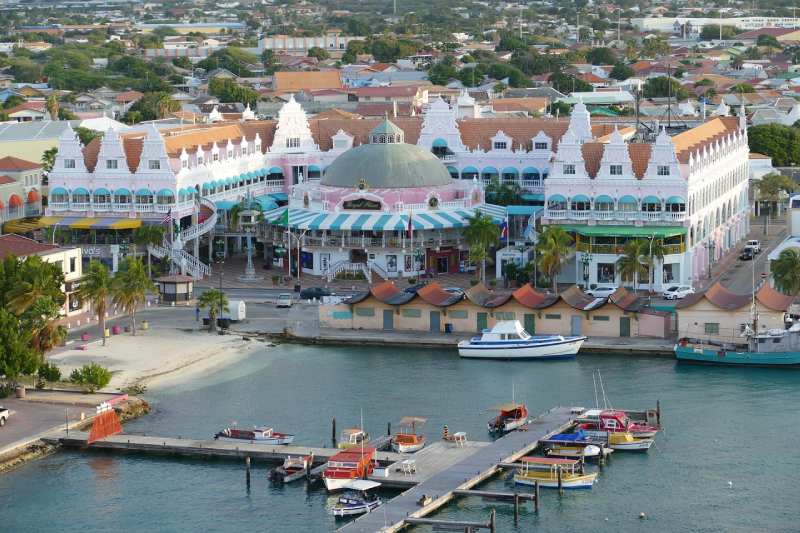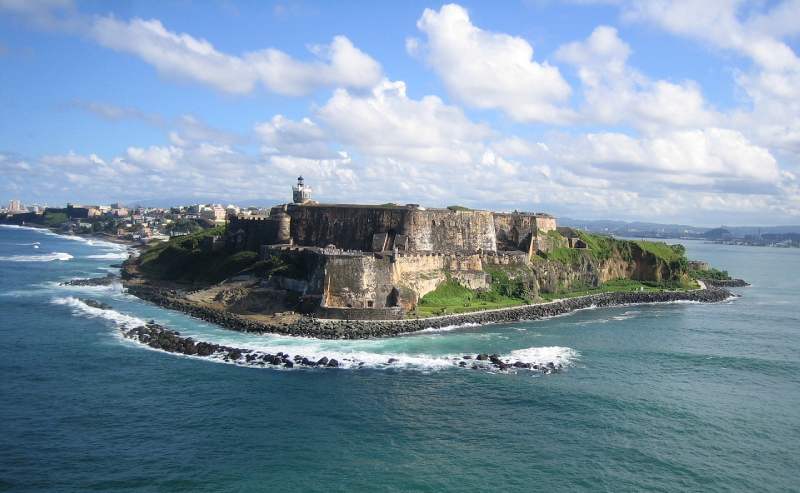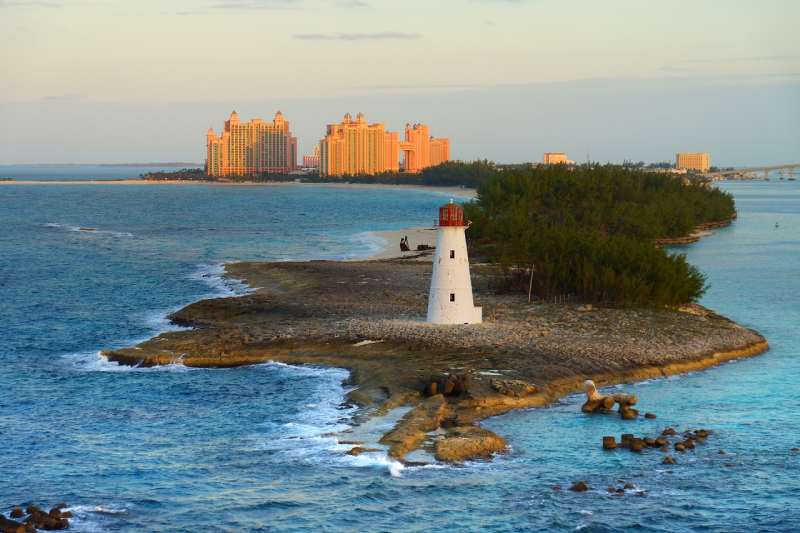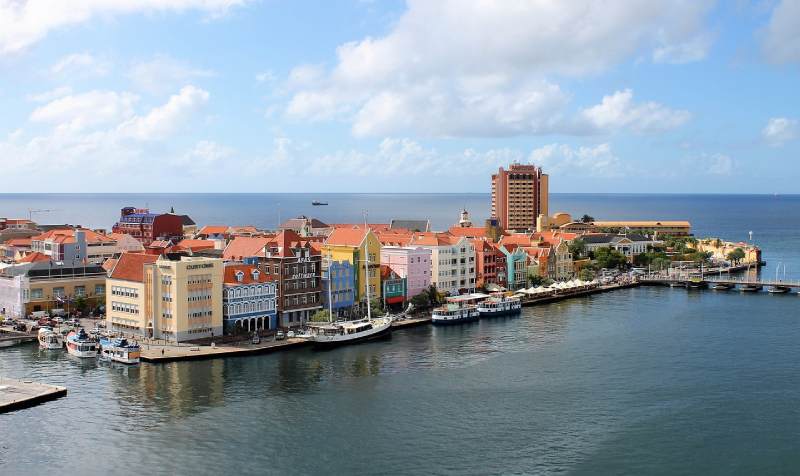When you think about cruising to the Caribbean, the first thing that probably comes to mind is warm, tropical climate. Indeed, the Caribbean is an ideal cruise destination for those seeking refuge from the cold, as it maintains consistently hot temperatures year-round.
If you’re planning a cruise to the Caribbean, expect temperatures of around 80°F (27°C), with daytime highs of up to 90°F (32°C). The climate also tends to be quite humid, particularly during the wet season.
January is the coolest month in the Caribbean, a time when the region experiences a mild and more temperate climate. Destinations like Puerto Rico, Turks and Caicos, The Bahamas, and Roatán are known for a subtle drop in temperature, offering a refreshing change from their typically warmer weather.
Seasons in the Caribbean: Dry Season and Wet Season
The Caribbean experiences two distinct seasons: the dry season, which lasts from December to May, and the wet season, lasting from June to November. The wet season is also known as the hurricane season. During the dry season, the weather is more stable and sunny, making it an ideal time for tourism. On the other hand, the wet season brings more rainfall and higher humidity, along with the increased chance of tropical storms and hurricanes.
When is the Hurricane Season in the Caribbean?
The peak of the hurricane season in the Caribbean lasts from August to mid-October. If you’re seeking a safe and enjoyable Caribbean cruise during this period, consider the ABC Islands (Aruba, Bonaire, and Curacao), as they typically remain dry and are rarely affected by hurricanes.
Caribbean Weather in January
There’s no better way to start the New Year than a cruise to the Caribbean!
In January, the Caribbean experiences temperatures ranging from 80°F to 85°F (27°C to 29°C). You’ll find the southern Caribbean is generally warmer than other areas. Meanwhile, the eastern Caribbean enjoys slightly cooler temperatures, often in the high 70s.
Rainfall is rare in January, and when it does occur, it is likely to clear up fast. January is the coldest month in North America and Europe, so you can expect a lot of tourists to come at this time.
Caribbean Weather in February
In February, the Caribbean enjoys warm, sunny weather similar to January. Temperatures reach 86°F (30°C) in southern islands like Aruba, and around 78°F (25°C) in northern islands like Cuba and The Bahamas.
February is also a popular month to book a romantic couples’ cruise, thanks to Valentine’s Day, which falls on February 14th.

Caribbean Weather in March
March sees a lot of activity in the Caribbean, largely due to the consistently warm and dry weather. This attracts masses of spring breakers and snowbirds to the Caribbean to escape the cold.
In March, you can expect mostly dry weather. The only exception is Bermuda, which experiences an average of 4.3 inches of rain during this month.
In the northern parts of the Caribbean, temperatures start to rise, while the southern islands experience blistering heat. Average daytime temperatures hover around 84°F (29°C) during March.
Caribbean Weather in April
In April, it’s really hot across the Caribbean. The temperature usually goes up to about 85°F (29°C). Trinidad claims the title of the hottest location, with an average high of 91°F (33°C), whereas the Bahamas offers a cooler climate with an average high of 82°F (27°C).
Puerto Rico’s wet season begins in April, with the island averaging almost five inches of rain during April.
April is the perfect month for swimming and water activities in the Caribbean, where the average ocean temperature reaches a warm 27°C (80°F).

Caribbean Weather in May
In May, the Caribbean’s shoulder season begins, making it the perfect time for those seeking an affordable escape from the cold. As May progresses, humidity levels rise, and temperatures typically reach the mid to upper 80s.
The Caribbean’s dry season comes to a close in May. Although you may encounter occasional rainfall during this month, it typically clears up quickly.
Temperatures in the northern Caribbean continue to rise in May, with the Bahamas reaching an average high of 85°F (30°C).
Caribbean Weather in June
June is the first month of the wet season in the Caribbean, yet the chance of showers remains low across most islands. Expect an average of 6.1 inches of rainfall this month, with rain occurring on about 13 days.
The hurricane season in the Caribbean officially begins in June. Although don’t let this scare you from cruising, as the chance of experiencing a hurricane this month is still low. Don’t forget that June is still part of the shoulder period, so expect great deals on resorts and cruises.
In June, the climate remains quite humid, with temperatures ranging between 77°F and 88°F (25°C to 31°C). Additionally, you’ll find that temperatures in the northern Caribbean start to resemble those in the south.

Caribbean Weather in July
July brings increased rainfall, averaging around 6 inches and typically having 14 rainy days. Trinidad, known as one of the rainiest islands in the Caribbean, receives an average of 7.6 inches of rain with approximately 21 rainy days in July.
July is still within the hurricane season, but it’s a month before the season’s peak. A good vacation option during this time is the ABC islands (Aruba, Bonaire, and Curacao), which are less prone to hurricanes and storms.
Weather during July ranges from the mid 80s to low 90s. July is the perfect month for snorkeling as the ocean remains pleasantly warm, with an average temperature of 83°F (28°C).
Caribbean Weather in August
If you’re traveling to the Caribbean in August, expect warm and humid weather, typically in the high 80s to low 90s. In Cozumel, the average high is around 91°F (33°C), while places like St. Lucia and Barbados are a bit cooler, averaging highs of 87°F (30°C).
August is a rainy month in certain Caribbean areas. St. Lucia, for example, experiences 21 rainy days with an average of 6.2 inches of rain. In contrast, Aruba and Curacao are much drier, with each averaging less than 2 inches of rain per month.
Be aware that August marks the start of the peak hurricane season. To minimize the chance of encountering bad weather, consider traveling to the ABC islands (Aruba, Bonaire, and Curacao).

Caribbean Weather in September
September kicks off the school year and the peak hurricane season, so expect small crowds. The weather generally sees temperatures soaring to the high 80s.
September is the month with the highest rainfall, with some areas getting over 13 inches of rain. The Cayman Islands and St. Lucia are among the rainiest locations, each experiencing 20 days of downpour.
While September might not sound like the ideal month for traveling, you can still visit the Caribbean if you choose the ABC islands (Aruba, Bonaire, and Curacao). These islands enjoy dry conditions and a lower risk of hurricanes, making them a popular destination in September.
Caribbean Weather in October
With October’s arrival, the peak hurricane season comes to an end. The early part of the month presents the greatest hurricane risk. However, encountering a storm is more probable than facing a hurricane during this month.
Rainfall in October is generally less frequent compared to September. The ABC islands (Aruba, Bonaire, and Curacao) continue to offer dry conditions, making them perfect travel destinations.
The weather in the Caribbean is still warm during October, reaching average highs in the mid to upper 80s.
Caribbean Weather in November
In November, the likelihood of hurricanes is quite low, with the official end of the hurricane season on November 30. While there’s still a notable chance of rainfall, it’s lower compared to September and October.
The weather stays pleasantly warm, with average temperatures hovering between the 70s and 80s throughout the month.
For a November getaway, consider Curaçao and Jamaica, both of which typically receive less than 4 inches of rain, making them ideal destinations.

Caribbean Weather in December
As December brings colder temperatures to the northern hemisphere, expect plenty of people escaping to the Caribbean to avoid the cold. Expect high prices at the end of the month as Christmas draws near. Temperatures during December reach average highs in the mid 80s, though it can reach the low 70s during night.
The risk of rain is relatively low at this time of the year, though you might experience the occasional shower. Additionally, December also marks the first month outside of the hurricane season.
Final Words
The Caribbean is the perfect retreat from the harsh winter cold. If you’re considering a cruise to the Caribbean, the best time to go is during the dry season, which lasts from December to May. Keep in mind that this period is also the peak season, potentially resulting in higher costs. For those on a tighter budget, consider cruising between May and July, which falls within the shoulder season.
The ABC islands (Aruba, Bonaire, and Curacao) stand out as excellent spots to cruise to during the hurricane season, thanks to their dry climate and low hurricane risk. When it comes to the rest of the Caribbean, it’s best to avoid visiting during the peak hurricane season unless you are prepared for itinerary changes and frequent downpours.
Related articles:

